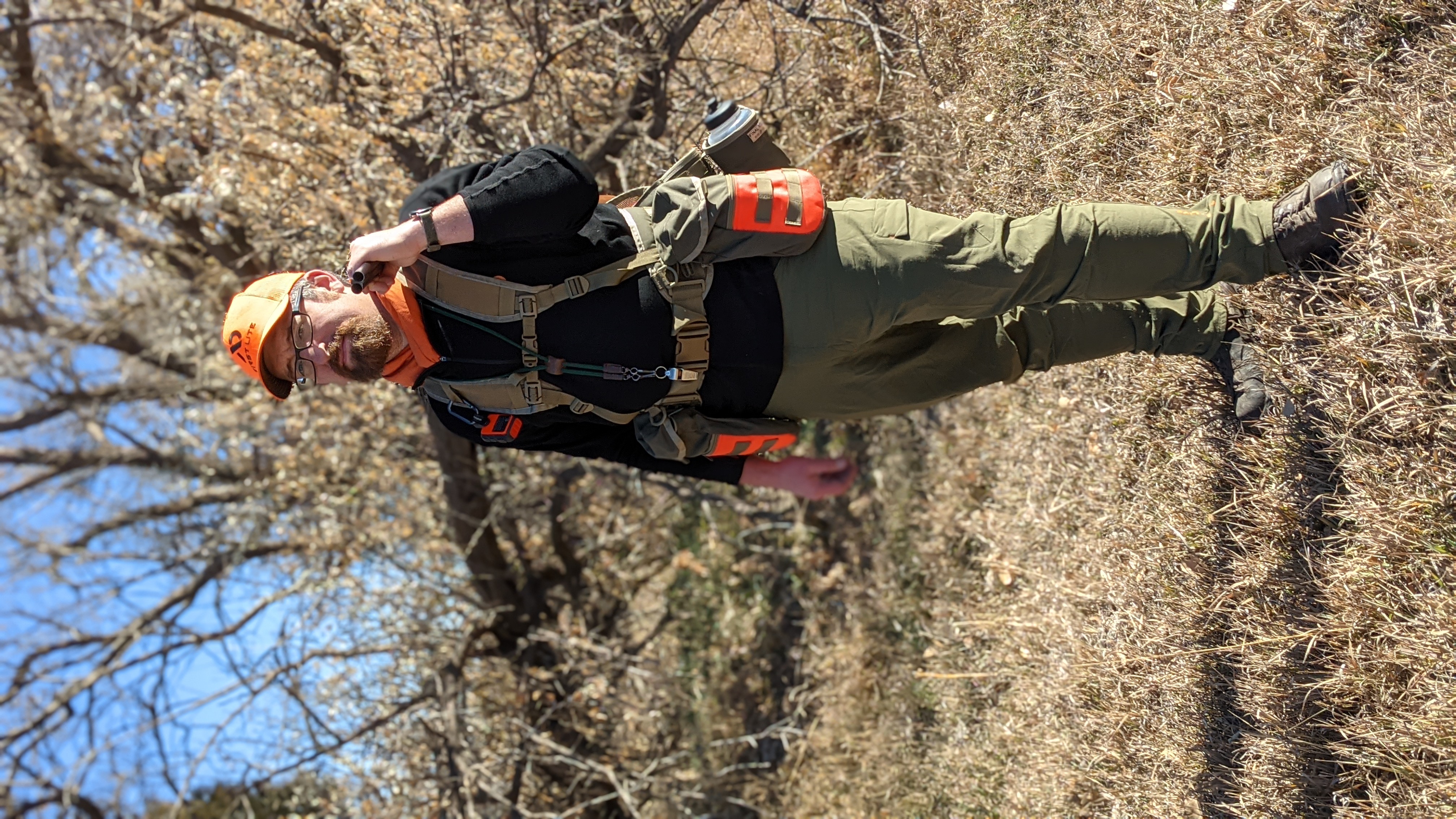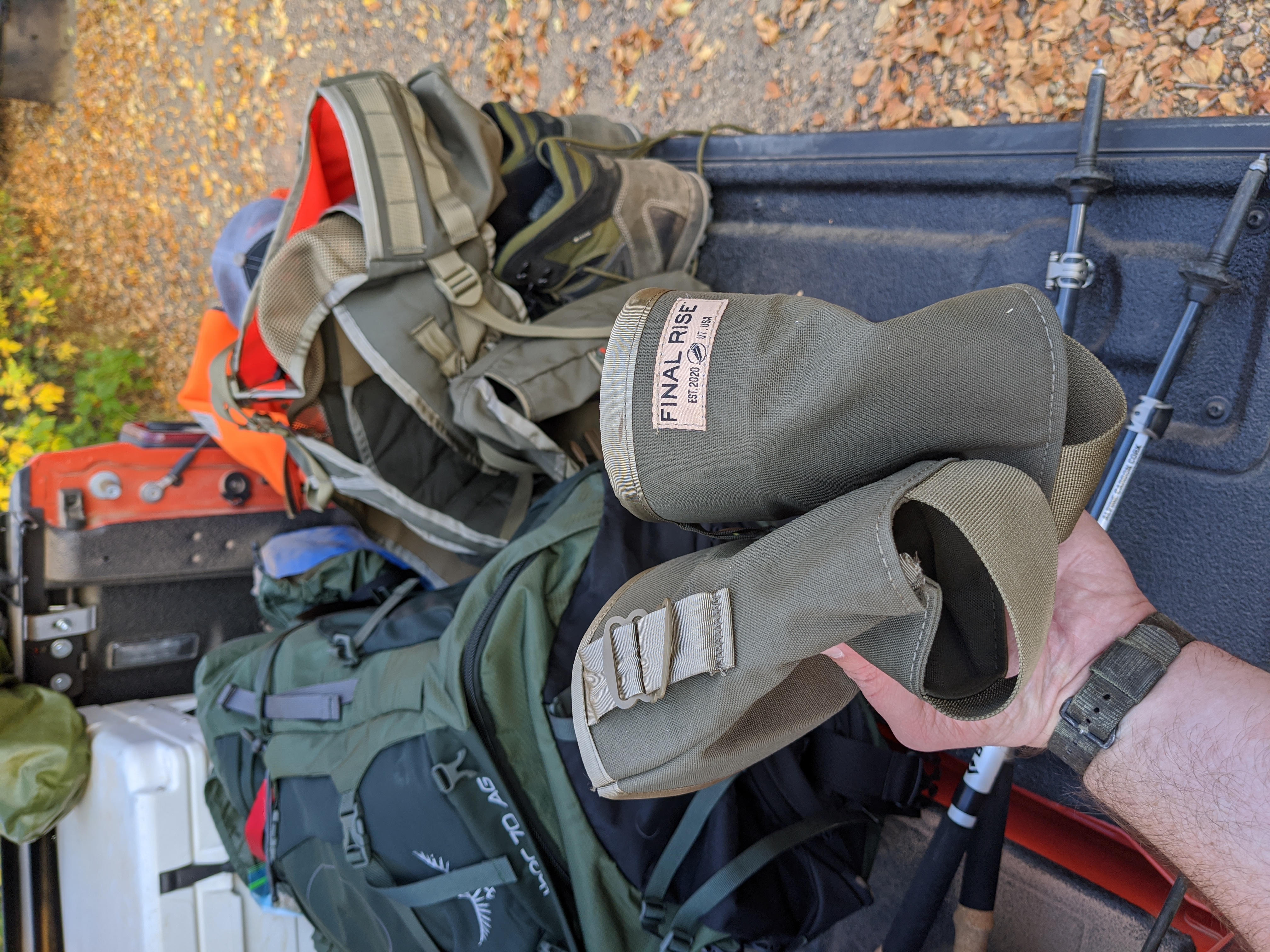The Final Rise vest has been getting lots of attention this year. It’s the new lightweight modular upland vest system from Matt Davis of MTNOps. He’s a bird hunter, like us — and when I was looking to replace my old Columbia vest I wore back east with something a little more modern and friendly to my back and shoulders it just kept popping up as an option.

Let me be up front. The Final Rise vest system and a Columbia vest are absolute worlds apart. The Final Rise system is much more closely related in it’s upland DNA to the more modern vests like the offerings from Wing Works, Q5, and now the Chief Upland vests. They distribute loads across the shoulders and back rather than simply hanging around your neck like a chimp. Having a pack style large webbing belt with a lumbar pad helps keep the weight at your hips. That’s useful when you’re packing up a hill for ptarmigan or chukar — or when you’ve got your limit of pheasants heading back on the long walk to the truck.

Specs
The Final Rise vest itself will run you $300 and get you the vest, water bottle holders, water bottles, and ammo dump pouches. For an additional fee you can add a large pocket or medium pocket (I recommend 2 if you’re going this route), or straps to cinch down a jacket along your back.
The vests are sewn in Matt’s Utah home of 500D and 1000D Codura and available in Blaze Orange or Ranger Green.
The base Final Rise system includes:
- Bird bag with 3 built in zippered storage compartments
- True Weight-bearing Padded Waist Belt
- No-Slip Grip Shoulder Harness w/ handheld and accessory webbing
- Hydration compatible with both vertical and lumbar style bladders
- 2 x Easy Access Shell Pockets with outer zipper compartments.
- 2 x Easy Load Water Bottle Holsters
- 2 x Free Pop-top & Squeeze 32oz Bottles
Modular
The Final Rise vest system utilizes PALS webbing throughout the sides and back allowing you to weave accessories both by the company and from elsewhere into the base vest. It also means that when you’re going on a trip and you don’t require certain things you can drop them at home or in the truck. On a recent trip I was going bladder only for my water — and having loops on either side for water bottles might hinder mobility in tight spaces. So I dropped the water bottle holders at the truck and kept the 3 Liter bladder centered on my spine.

The addition I made fairly quickly was the large pouch which I mounted across the back of the game pouch. The large pouch, available in Blaze Orange or Ranger Green allowed enough storage space for me to stow my Firstlite Chama EXP in it. That way I could still easily put birds in my game pouch without bloodying up my wool layers.
A suggestion when adding items to the vest is to take a small electronics flathead screwdriver when you feed the tab through the loop on the vest. Once the tab is about as far as you can push it, pull gently using the flathead screwdriver on the tab and you can finish the feed of the strap. I found this useful as the webbing is fairly tight to the vest when you first get it. So long as you have a gentle touch you won’t puncture the fabric.
My Setup
Since this is my new upland vest I’d be remiss if I didn’t describe how I’ve got it set up. On my right shoulder there’s a tab that I can hang my inReach from for ptarmigan or other high mountain hunts. Being a lefty I mount things that will otherwise hinder a proper shotgun mount on my opposite shoulder.
That also includes where I route my hydration tube in this case. For hydration in my Final Rise vest I alternate between bottles and bladder, but I find that I’ll run both bottles and bladder when it’s hot and just the 3L Source bladder when it’s cooler. I’m usually trying to keep myself and both dogs in water, so sometimes carrying the extra water is necessary.
I typically put my ammunition in my left dump pouch while the right is relegated to snacks and empty hulls. I’ll keep sandwich baggies or freezer bags in the front zipper pockets of the dump pouches for either foraging opportunities or cleaned birds. My Garmin Alpha 100 attaches to the left hand D-Ring via the lanyard and I place it in my left hand ammo pouch.
The back of the vest itself I’ve mounted a large pouch where I stow my wool outer layer when I get hot or an ultralight rain shell for the rain. The pouch isn’t big, but you don’t want a lot of bulk back there. The sternum straps and hip belt with lumbar support really help the load distribution.
Overall Impressions
It’s hard not to like this vest coming from an old Columbia traditional setup. That said, if you’re used to that the $300 sticker price shows you that technology comes at a cost. Matt did his research here and brought in the best technology for the toughest product for the weight class. Empty, the vest is very light, much lighter than it’s competitors. When you’re looking to put on the miles whether it’s on the rolling hills of the Dakota Badlands or the 14,000 foot peaks of Colorado’s high mountains, ounces count.
I’m happy to continue tinkering with this vest. There are a few improvements I’d like to make such as a magnet mount for my hydration bladder and some retention clips for the tag ends of webbing straps but these are largely cosmetic. It takes a few seasons to really dial in a system on a pack, vest, or other storage device to how you like it. A place for everything and everything in it’s place.







